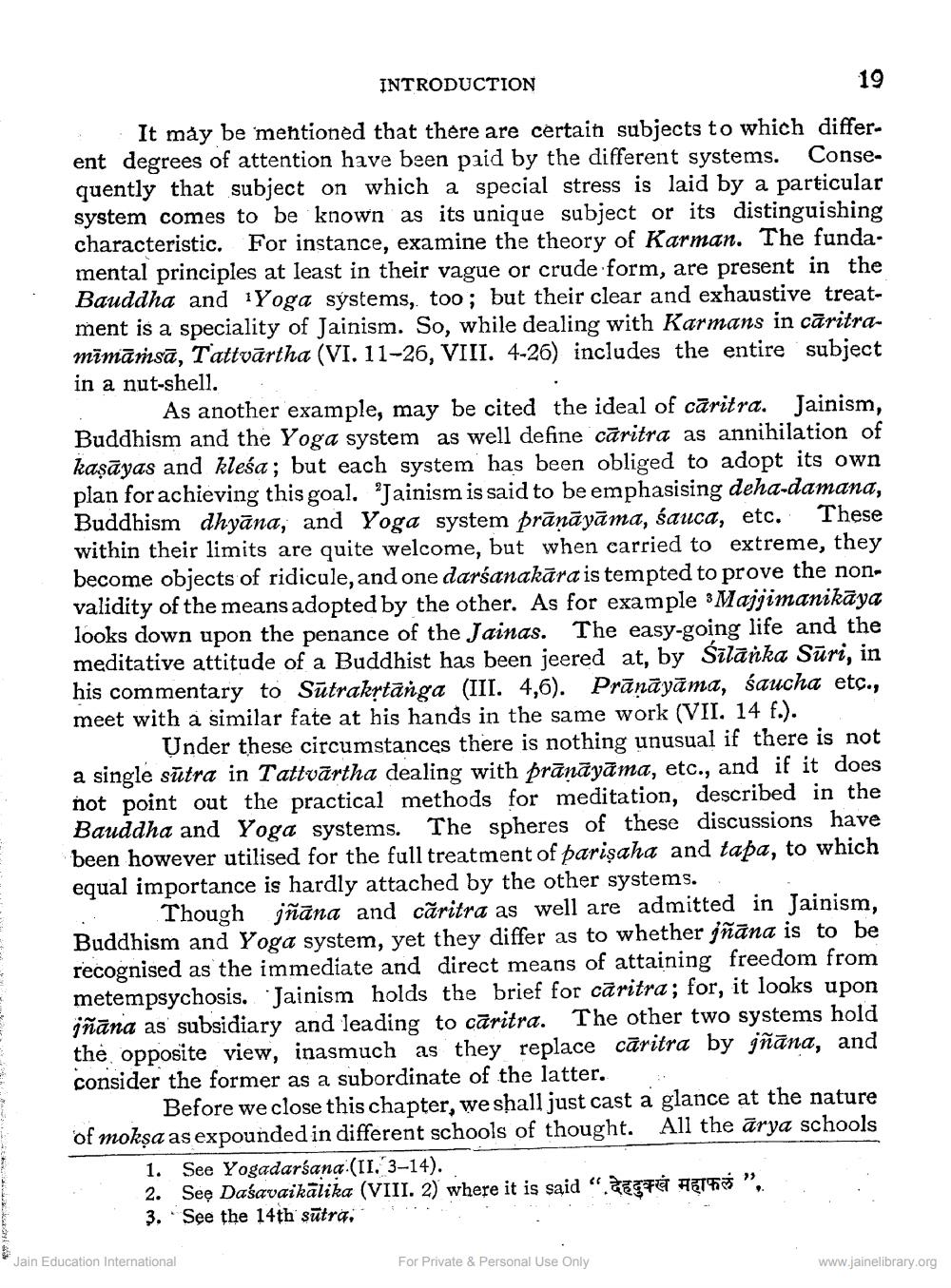________________
INTRODUCTION
19
It may be mentioned that there are certain subjects to which different degrees of attention have been paid by the different systems. Consequently that subject on which a special stress is laid by a particular system comes to be known as its unique subject or its distinguishing characteristic. For instance, examine the theory of Karman. The fundamental principles at least in their vague or crude form, are present in the Bauddha and Yoga systems, too; but their clear and exhaustive treatment is a speciality of Jainism. So, while dealing with Karmans in cāritra mīmārsā, Tattvārtha (VI. 11-26, VIII. 4-26) includes the entire subject in a nut-shell.
As another example, may be cited the ideal of caritra. Jainism, Buddhism and the Yoga system as well define cāritra as annihilation of kaşāyas and klesa; but each system has been obliged to adopt its own plan for achieving this goal. Jainism is said to be emphasising deha-damana, Buddhism dhyāna, and Yoga system prānāyāma, śauca, etc. These within their limits are quite welcome, but when carried to extreme, they become objects of ridicule, and one darśanakāra is tempted to prove the nonvalidity of the means adopted by the other. As for example 3 Majjimanikaya looks down upon the penance of the Jainas. The easy-going life and the meditative attitude of a Buddhist has been jeered at, by Silanka Sūri, in his commentary to Sūtrakrtanga (III. 4,6). Prānāyāma, śaucha etc., meet with a similar fate at his hands in the same work (VII. 14 f.).
Under these circumstances there is nothing unusual if there is not a single sūtra in Tattvārtha dealing with prānāyāma, etc., and if it does not point out the practical methods for meditation, described in the Bauddha and Yoga systems. The spheres of these discussions have been however utilised for the full treatment of parisaha and tapa, to which equal importance is hardly attached by the other systems.
Though jñāna and cãritra as well are admitted in Jainism, Buddhism and Yoga system, yet they differ as to whether jñāna is to be recognised as the immediate and direct means of attaining freedom from metempsychosis. "Jainism holds the brief for cãritra; for, it looks upon jñāna as subsidiary and leading to cāritra. The other two systems hold the opposite view, inasmuch as they replace cāritra by jñāna, and consider the former as a subordinate of the latter.
Before we close this chapter, we shall just cast a glance at the nature of moksa as expounded in different schools of thought. All the ārya schools
1. See Yogadarśana:(11. 3-14). 2. Sep Daśavaikālika (VIII. 2) where it is said " SETT AT ".. 3. See the 14th sūtra,
* Jain Education International
For Private & Personal Use Only
www.jainelibrary.org




